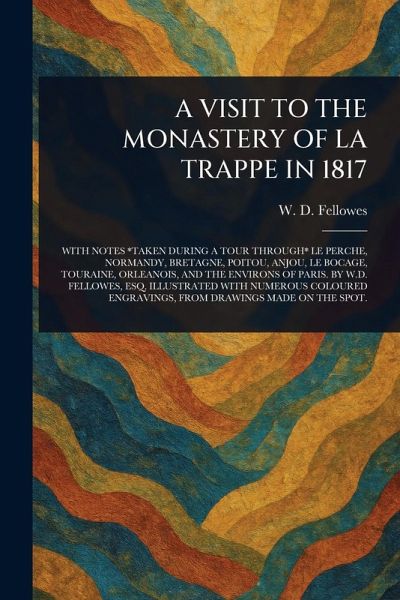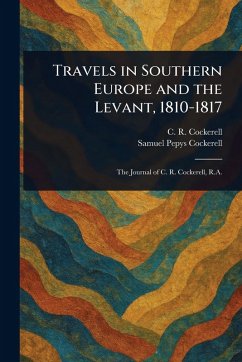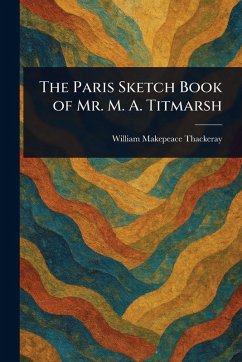
A Visit to the Monastery of La Trappe in 1817
Versandkostenfrei!
Versandfertig in über 4 Wochen
15,99 €
inkl. MwSt.

PAYBACK Punkte
8 °P sammeln!
Step back in time with W. D. Fellowes' "A Visit to the Monastery of La Trappe in 1817," a fascinating glimpse into 19th-century France and religious life. This meticulously prepared edition offers a unique travelogue through the eyes of a visitor to the famed Abbaye de la Trappe, a monastery known for its strict Cistercian order. Beyond the monastery walls, Fellowes' journey extends through Le Perche, Normandy, Bretagne, and numerous other regions, painting a vivid picture of the French countryside and its people. Illustrated with numerous coloured engravings drawn on location, this book provi...
Step back in time with W. D. Fellowes' "A Visit to the Monastery of La Trappe in 1817," a fascinating glimpse into 19th-century France and religious life. This meticulously prepared edition offers a unique travelogue through the eyes of a visitor to the famed Abbaye de la Trappe, a monastery known for its strict Cistercian order. Beyond the monastery walls, Fellowes' journey extends through Le Perche, Normandy, Bretagne, and numerous other regions, painting a vivid picture of the French countryside and its people. Illustrated with numerous coloured engravings drawn on location, this book provides a rich visual and historical record. Explore the intersection of travel, religious observance, and 19th-century European history. "A Visit to the Monastery of La Trappe" offers a valuable resource for those interested in monasticism, French history, and historical travel accounts. Discover the world as it was seen nearly two centuries ago in this captivating journey through France. This work has been selected by scholars as being culturally important, and is part of the knowledge base of civilization as we know it. This work is in the public domain in the United States of America, and possibly other nations. Within the United States, you may freely copy and distribute this work, as no entity (individual or corporate) has a copyright on the body of the work. Scholars believe, and we concur, that this work is important enough to be preserved, reproduced, and made generally available to the public. We appreciate your support of the preservation process, and thank you for being an important part of keeping this knowledge alive and relevant.














